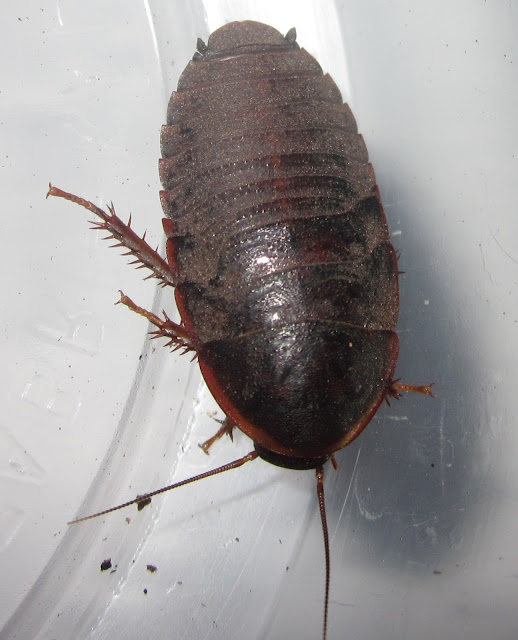This particular stock originates from Brazil, though this species has a wide range in South America. They've been in culture for a couple years now in Europe and Asia, but this is the first time they've been present in the US hobby.
It would appear that care is the same as for other Eublaberus, though these may be a tad slower breeding than some of the other hobby species. That, coupled with the gorgeous appearance of the polymorphic adults means that these will probably remain as more of a "pet" species for a while. 😄
I've got my 17 or so small nymphs housed in a well ventilated enclosure with a couple inches of coconut fiber as the substrate, which I'm keeping pretty humid. I've got paper towel rolls on top as hides, as well as leaf litter for them to nibble on. I'm keeping them at around 80F° and offering dog food and fruits as their staple diet.
Here are some pictures of one of the nymphs:
 |
| Wait, no, that's wrong... My camera must have glitched... 🤔😜 |
Most other Eublaberus spp. have very glossy, shiny nymphs, however E.marajoara nymphs have a rough, matte textured exoskeleton that dirt easily adheres to, presumably for camouflage purposes. Very similar to the nymphs of Blaberus, Byrsotria, and Hemiblabera in that regard.
Can't wait to see adults in person, and hopefully get to establish them in the US hobby once and for all! 😁
Well, that's gonna do it for this post, thanks for reading, hope everyone enjoyed, stay safe, and I'll see you all next time! 😉






No comments:
Post a Comment